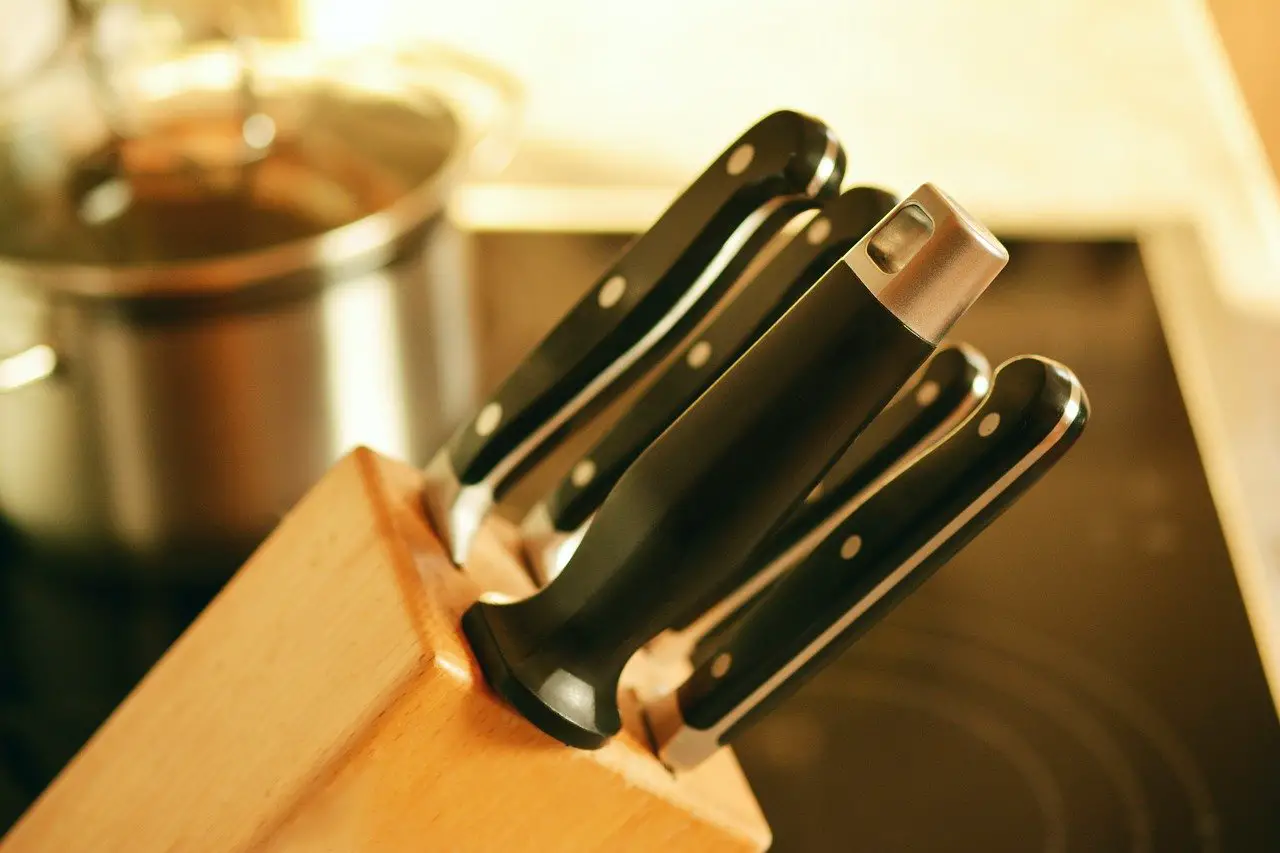Knife School
A good knife does wonders for the cooking joy in the kitchen! Read this guide and sharpen your skills using our list of knives for different purposes as well as care advice and information on how to make your knives last longer.
THE RIGHT KNIFE FOR THE RIGHT MATERIAL
The right knife for the right raw material is not to be underestimated. The cooking experience can be a real delight with knives that are adapted to their task. Therefore, it is good to have a knife for every function that you usually use in the kitchen. A chef knife and a bread knife might cover your needs? Or if you are a true master chef who also likes to fillet fish or meat, a fillet knife may also be in place. Let’s go through the most common knives.
1. Chef’s knife
the kitchen’s most common knife and a fantastic all-around knife! The chef knife is more or less a must in the kitchen as it can be used for several different ingredients. The knife has a wide blade that sits higher up so that you do not hit the cutting board when chopping.
2. Fillet knife
If you want to fillet the meat or fish as a professional, a fillet knife is good to have in the kitchen! The knife is characterized by its narrow and sharp blade so that you can easily fill the raw material without much waste. Thanks to the blade length, you get a long and sweeping motion.
3. Bread knife
The toothed bread knife easily cuts through the raw material without mashing it. This kind of knife is designed to get through hard surfaces while preserving the consistency of the raw material and works both when cutting up a slice of bread in the morning as the salad head for dinner.
4. Peeling knife
The peeler knife is a perfect universal knife to have in the kitchen for various purposes such as peeling root vegetables or fruit. The knife has a blade of about 8-12 cm which makes it the smallest knife in the kitchen, and has a straight and pointed blade.
The smooth size of the peeler knife is adapted to allow you to keep the raw material and the knife in the air for a smooth scaling.
5. The vegetable knife
the perfect knife to chop with! The vegetable knife, as the name suggests, is adapted to be able to chop your vegetables quickly and smoothly thanks to the high blade. The blade has a blunt tip, its length usually lies between 14-18 cm and is somewhat rectangular in shape.
- Store your knives safely and securely – preferably on a knife rail or in a knife block for more gentle storage of the knife. Proper storage keeps the sharpening and sharpening of the knife better than if it is in the kitchen drawer.
- Use wood or plastic cutting boards as these are more gentle on the blade’s edge than hard surfaces like marble.
- Use the back of the knife, not the knife, when you scrape off your chopped raw materials so you don’t wear the knife and never cut frozen ingredients or bone.
- Never wash your knife in a dishwasher as the sharpness and the properties of the material can be affected. Instead, use lukewarm water and detergent – much more than is not required.
- Has your knife received superficial rust stains? It can be easily removed with a little metal plaster or polishing rubber.
- Finally, grind your knives regularly for maximum service life.
Besides the fact that there are different kitchen knives for different raw materials, so does the degree of hardness in the steel knife’s function. The blade hardness is measured in the HRC (Rockwell) scale. Soft blades with, for example, a hardness of 54 HRC are easy to grind and most cook knives have a hardness between 54-64 HRC which means that the blades are durable but the sharpness can weaken over time. The standard recommendation for a kitchen is to have four knives – but which ones they are and what hardness they have, you decide on your needs and the properties you are looking for in a knife.
